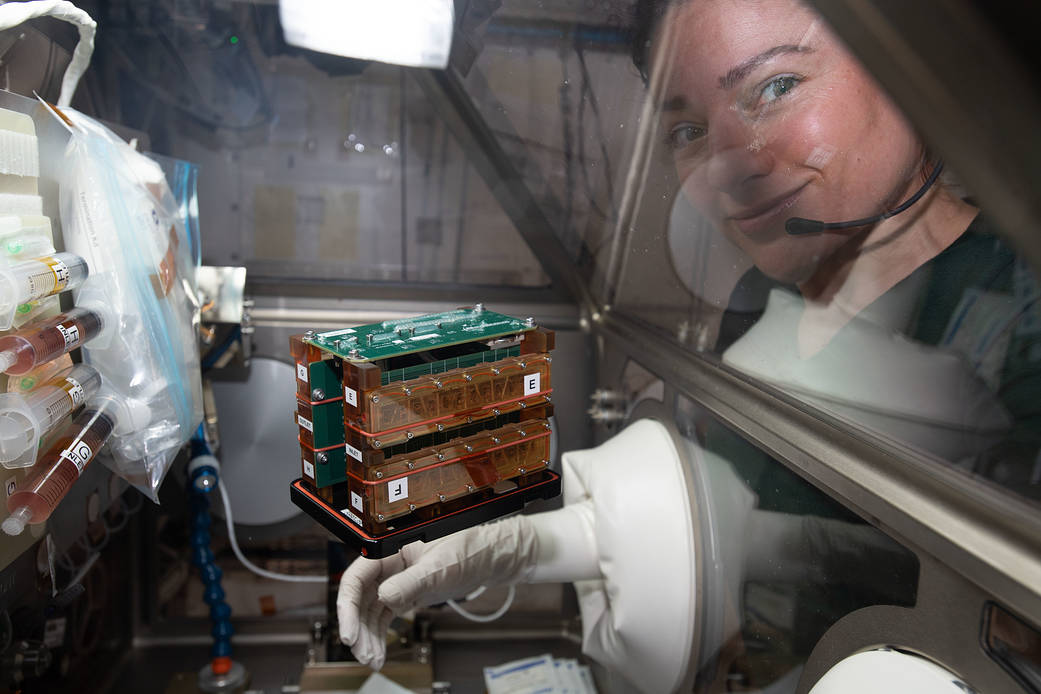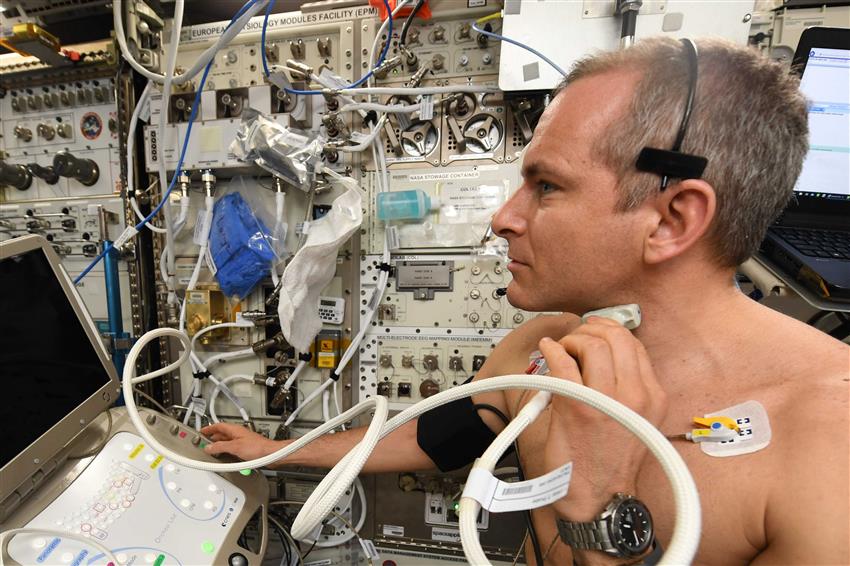6 min read
Everyday physical activities keep the cardiovascular system healthy. The human cardiovascular system, which includes the heart and blood vessels, has evolved to operate in Earth's gravity. When astronauts travel to space, their bodies begin to adjust to the microgravity of their spacecraft. Blood and other bodily fluids previously pulled downward by gravity now move toward the head, so the cardiovascular system doesn't have to work as hard to maintain blood flow to the brain. This adaptation to weightlessness can result in reduced blood volume and reduced function of the heart and blood vessels.
When astronauts return to Earth, gravity once again pulls their body fluids downward. The cardiovascular system is now challenged to regulate blood pressure, causing some astronauts to feel weak, dizzy, or faint when they stand immediately upon arrival on Earth. These symptoms can last for a few days until they get used to spending time back in Earth's gravity.
What we learn while aboard the space station has important applications on Earth. Many of the changes seen in space resemble those caused by aging on Earth. As we age, particularly if we don't remain physically active, the efficiency of the heart and blood vessels to maintain blood pressure while standing may decrease and some people may develop heart disease. Because spending time in space affects the heart and circulatory system, research on the space station looks at these effects in both the short and long term. Research aims to develop and test countermeasures to cardiovascular adaptations to spaceflight to benefit both astronauts and people on the ground.
Below are some examples of studies performed on the station involving cardiovascular research.

Using 3D ultrasound technology, Vascular Echo, an investigation from CSA (Canadian Space Agency), examined changes in blood vessels and the hearts of crew members in space and followed their recovery upon return to Earth. 3D images of blood vessels using ultrasounds show more detail than 2D images, just like how a model car is a better representation than a flat picture of that car. Astronauts used a motorized ultrasound probe to scan crucial body parts. Meanwhile on the ground, scientists could adjust the angle of the ultrasound beam emitted by the probe to collect the best image possible. Using this technology allowed crews to collect high-quality scans even though they're not necessarily expert sonographers.1
An investigation called Fluid Shifts demonstrated how much fluid-including water and blood-moves from the lower body to the upper body in space. The study also evaluated the impact these shifts have on the structure and function of the eyes and brain. Results showed that several measurements of body fluids shifting towards the upper body were elevated during spaceflight but were reduced to preflight levels when using methods to reverse these fluid shifts.2

An investigation completed in 2018, Cardiac Myocytes examined how stem cells differentiate into specialized heart cells (cardiac myocytes). The experiment evaluated cell maturation in microgravity and tested the ability of the cells to repair damaged heart tissues. This study advances the development of possible regenerative therapies for both astronauts and patients on Earth.






